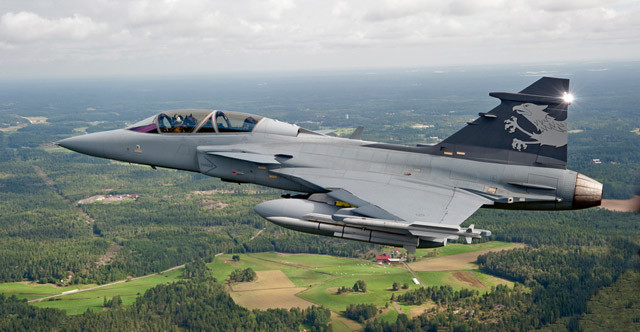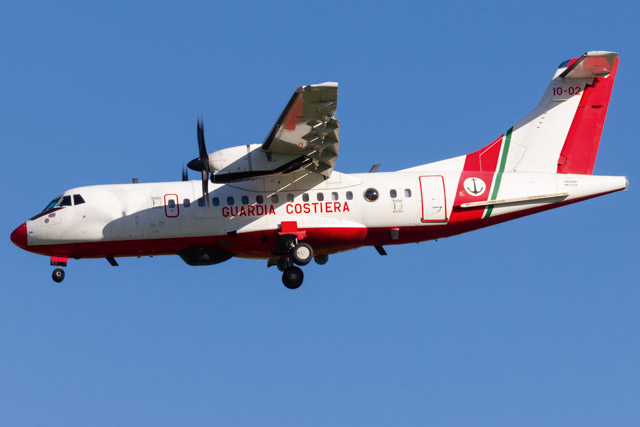Of the cluster of aerospace and defence assembly plants clustered around Milan, Selex ES's facility at Nerviano is perhaps the hardest to quantify.
For example, Alenia Aermacchi's factory at Venegono Superiore makes jet trainers and the Vergiate plant of AgustaWestland churns out helicopters – both highly visible, tangible end products. The Selex site, on the other hand, makes a huge number of components that are invariably tucked away underneath the skin of aircraft – radars, mission systems, sensors and so on. That those systems are vital is not in dispute, however, they tend to be overshadowed by the platform they are installed on.

Selex ES/Eurofighter
Nonetheless, Selex continues to be a vital part of Finmeccanica. So far in 2014 trading has been positive, with the six months to June showing "good results". In the six months to end-June, Selex recorded earnings before interest and taxation (EBIT) of €47 million ($59 million) on revenue of €1.5 billion, against figures of €26 million and €1.5 billion for the same period a year earlier.
Selex says 2014 has been a year of "progress" and it is "on track to achieve this year's results target". This is despite business having "been difficult to forecast", it admits.
"Let's say that we have had some positive surprises and some downsides too, because it's quite difficult to get the schedule of this because the process of procurement all around the world has been quite difficult and quite protracted, to a certain extent," the firm says.
Inevitably, restraint in defence spending has played its part, as have geopolitical tensions – between Ukraine and Russia, for example. "So some prospects are on hold," it adds.
One area of growth, however, is the market for unmanned air vehicles, which Selex manufactures in its plant near Trieste in Italy's northeast.
Its sister company Alenia Aermacchi also has interests in UAV manufacturing. To avoid conflict, the rule handed down some years ago by parent company Finmeccanica limits Selex to building UAVs with a maximum take-off weight of 1t – beyond that it is Alenia's territory (albeit frequently utilising Selex avionics and sensors).
At the moment the largest platform Selex produces is the 650kg Falco Evo, but the company says it could potentially add a bigger UAV to its range, as that remaining 350kg means "there is still room for growth". However, there is as yet no defined business case for that product.
That said, Selex already has an interest in a larger platform, through its contribution to the development of fellow Italian firm Piaggio Aero's P1HH Hammerhead – an unmanned variant of its P180 turboprop. Selex provides the avionics, mission management system, sensors and ground station.
That level of systems integration is something Selex thinks will stand it in good stead for the future. "This package of capabilities is something that we are aiming to make available to other platform manufacturers too," it says. Selex also points out that the Hammerhead is the only European medium-altitude, long-endurance UAV "that has already seen significant work started".
And although there is still a drive by countries to acquire unmanned air systems, Selex has also seen a trend towards "service contracts" – the equivalent of an aircraft wet lease, where the manufacturer provides the UAVs, ground station and operators for a fixed period. "Customers don't have to invest heavily in an asset that will only be used for a finite period of time," it says.
In addition, Selex is also active in adapting its range of mini- and micro-UAV platforms for civil use. The non-military market – including space – represents just 10% of revenue at present, but Selex is anxious to tap into an area of potential growth.
Meanwhile, at Nerviano the focus is very much on radars. The facility designs and produces mechanically scanned array radars such as the Grifo for combat aircraft. The company has sold around 450 units since its introduction in 1991, on a variety of platforms including the Dassault Mirage III and Northrop F-5. Although clearly an older-generation product, there remains continued interest in the Grifo, says Selex – not least through the potential for upgrade work.
"We were thinking some years ago that the [Grifo] market could shrink, but in reality it's not completely true – due to the big cuts in defence spending there is interest in keeping older platforms for a longer period," it says.
The market for retrofits is not a large one, and no new Grifos are currently being assembled, "but we hope to have something in place by year-end".
The company has, however, tested the installation of the Grifo on Alenia's M-346 trainer, which could suggest future potential should the jet be offered as a light combat aircraft.
A number of other products round out Nerviano's capabilities. The first is the Gabbiano ISR radar, which is suited to ISR search and rescue and maritime patrol missions. Selex boasts that the latest iteration is lighter, compact and cheaper. It can also be installed on helicopters and has been proposed by AgustaWestland as part of its bid for a 70-unit order for the Polish armed forces.
Its Airborne Tactical Observation and Surveillance (ATOS) mission management system, which combines radar with other electro-optical sensors and workstations, has had reasonable success in the maritime patrol segment. Cobham, for example, utilises a modified Bombardier Dash 8 Q400 fitted with ATOS on contract to the Australian Customs Service under the Coastwatch programme. The system is also installed on the ATR 42 MPAs operated by the Italian coastguard.
ATR MPA. Picture credit: AirTeamImages
The firm’s experience in integrating these sensor inputs also led to the development of its SkyISTAR mission management system for UAVs.
Infrared track and search systems are also produced, for instance its Pirate equipment is fitted to the Eurofighter Typhoon, while a similar system, Skyward, will equip Saab's Gripen NG.

Saab
Although there still remains some uncertainty on what the reshaped Finmeccanica will look like, with the focus now much more on aerospace and defence, there is no doubt that Selex will continue to play an integral role.
Source: Flight International














